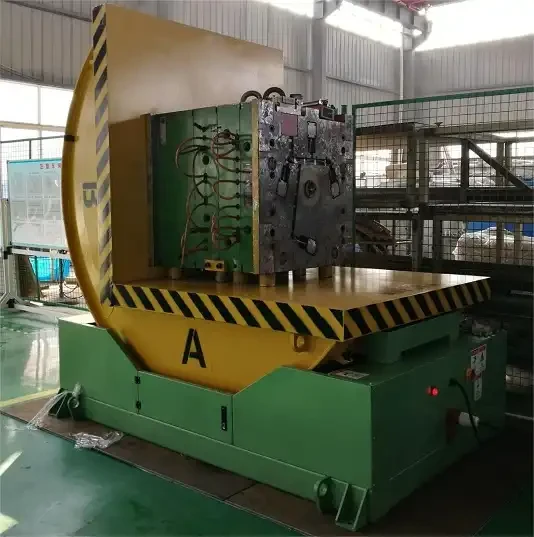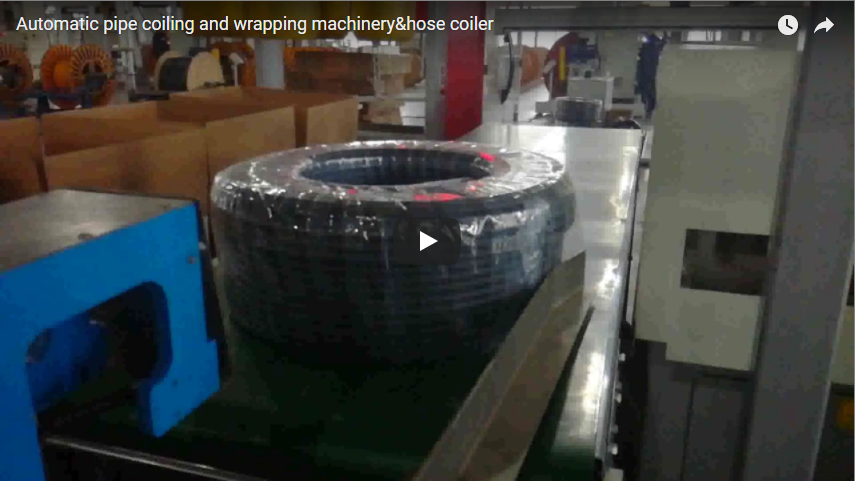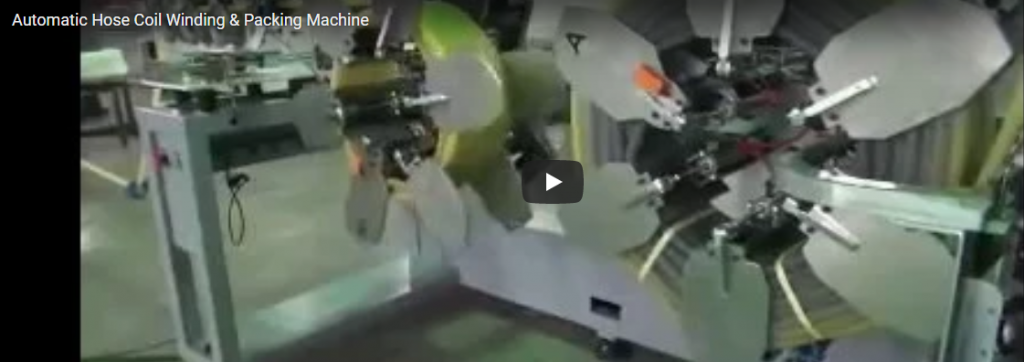1. General Safety Guidelines for Coil Upenders
Ensuring safety in coil upender operations is paramount for any industrial setting. First and foremost, always adhere to the manufacturer's instructions. These guidelines are meticulously designed to protect operators and maintain equipment integrity. Proper training for all personnel involved in coil upender operations is non-negotiable. This includes not only operation procedures but also safety protocols and emergency responses.
Maintaining a clean and obstacle-free work area is crucial. Clutter can lead to accidents and impede swift movement in case of emergencies. Regularly inspect the area around the coil upender and remove any potential hazards.
Perhaps most critically, never exceed the maximum load capacity of the coil upender. Overloading can cause catastrophic failures, leading to severe injuries and equipment damage. Always check the weight of the coil against the upender's specifications.
By rigorously following these guidelines, operators can significantly reduce the risk of accidents, ensuring a safer work environment and more efficient operations. Remember, safety is not just a procedure—it's a mindset that should be cultivated and maintained at all times.
2. Before Operating a Coil Upender
Safety begins before the coil upender is even powered on. A thorough pre-operation inspection is crucial to ensure the equipment is in optimal condition for use. This inspection should be a standardized process, performed without fail before each operation.
Start by visually examining the entire machine for any obvious signs of damage or wear. Look for loose bolts, frayed cables, or any components that appear out of alignment. Pay special attention to load-bearing parts and hydraulic systems, as these are critical to the upender's safe operation.
Next, systematically verify that all safety features are functioning correctly. This includes testing emergency stop buttons, checking that safety guards are in place, and ensuring that warning lights and alarms are operational. These features are your last line of defense against accidents, so their integrity cannot be compromised.
Lastly, survey the surrounding area to confirm it's clear of unauthorized personnel. Establish a safety perimeter around the upender and ensure only trained operators are within this zone. This step prevents potential injuries to bystanders and allows operators to work without distractions.
Remember, taking these precautions might seem time-consuming, but they are invaluable in preventing accidents and ensuring a safe working environment. A few minutes of careful inspection can save hours of downtime and, more importantly, protect lives.

3. Loading the Coil Upender: A Critical Safety Procedure
The process of loading a coil upender demands precision and adherence to safety protocols. Begin by selecting the appropriate lifting equipment, ensuring it's rated for the coil's weight. Overhead cranes or forklifts with proper attachments are typically used, but always verify compatibility with your specific coil and upender model.
Centering the coil on the upender is crucial for maintaining balance during the upending process. Utilize the upender's guide marks or measurement tools to achieve accurate placement. Even slight misalignment can lead to instability and potential accidents.
Once positioned, secure the coil according to the manufacturer's guidelines. This often involves using straps, chains, or specialized clamping mechanisms. Proper securing prevents the coil from shifting during the upending process, which could result in equipment damage or operator injury.
Before initiating the upending process, perform a final check of all attachments. Verify that all securing devices are correctly fastened and tensioned. This double-check is your last opportunity to catch any oversight that could compromise safety.
Remember, rushing through these steps can lead to catastrophic failures. Take the time to methodically complete each stage of the loading process. Your attention to detail here sets the foundation for a safe and successful upending operation.
4. During Coil Upending Operations: Prioritizing Safety in Motion
When the coil upender is in operation, maintaining vigilance is crucial for operator safety. First and foremost, all personnel must maintain a safe distance from the machine. The upending process involves significant mechanical forces, and proximity increases the risk of injury.
Operators should be acutely aware of pinch points and crushing hazards. These areas, where moving parts can catch or compress body parts, pose severe risks. Clearly mark these zones and ensure all workers understand their locations.
It's imperative never to attempt adjusting the coil while the upender is in motion. Such actions can lead to entanglement or crushing injuries. If adjustments are necessary, always stop the machine completely and follow proper lockout/tagout procedures before approaching.
Keep hands, feet, and loose clothing away from all moving parts. Even seemingly minor contact can result in serious injuries. Use designated control panels or remote operations where possible to maintain distance from the machine's moving components.
Remember, safety during operation is not just about following rules—it's about maintaining constant awareness and respecting the power of the equipment you're operating.
5. Unloading the Coil Upender: Ensuring a Safe Conclusion
The unloading process of a coil upender is as critical as its operation, requiring careful attention to safety protocols. Patience is key; always wait until the upender has come to a complete stop before approaching. Premature action can lead to severe accidents, as the machine may still have residual movement or stored energy.
When removing the coil, employ proper lifting techniques to prevent strain or injury. Utilize appropriate lifting equipment, such as cranes or forklifts, ensuring they are rated for the coil's weight. Never attempt to manually handle the coil, regardless of its size.
Before detaching the coil from the upender, verify its stability. Check that it's properly balanced and won't roll or shift unexpectedly. This step is crucial in preventing accidents during the transfer process.
Finally, clear the area of any debris or wrapping materials that may have accumulated during the upending process. These can pose tripping hazards or interfere with equipment operation. Maintaining a clean work area not only promotes safety but also prepares the space for the next operation.
Remember, a safe unloading process is the culmination of a well-executed upending operation, ensuring both worker safety and operational efficiency.
6. Maintenance and Inspection Safety: The Cornerstone of Reliable Coil Upender Operations
Regular maintenance and thorough inspections are vital to ensuring the longevity and safe operation of coil upenders. Adhering to a consistent maintenance schedule is non-negotiable. This proactive approach helps identify potential issues before they escalate into major problems or safety hazards.
When it comes to repairs, only qualified personnel should be entrusted with the task. These individuals possess the necessary expertise to accurately diagnose issues and implement correct solutions. Allowing untrained staff to attempt repairs can lead to further damage or create dangerous operating conditions.
Using manufacturer-approved parts for replacements is crucial. These components are specifically designed for your equipment, ensuring proper fit and function. Generic or unauthorized parts may compromise the upender's performance and safety features.
Meticulous documentation of all maintenance and inspection activities is essential. This creates a comprehensive history of the machine's condition and any work performed. Such records are invaluable for tracking recurring issues, planning preventive maintenance, and demonstrating compliance with safety regulations.
By prioritizing these maintenance and inspection practices, companies can significantly reduce downtime, extend equipment life, and most importantly, maintain a safe working environment for all operators and personnel.
7. Emergency Situations: Preparedness is Key in Coil Upender Operations
When operating coil upenders, being prepared for emergencies can mean the difference between a minor incident and a major catastrophe. First and foremost, every operator and nearby worker must know the exact location of emergency stop buttons. These critical safety devices should be clearly marked and easily accessible, allowing for immediate machine shutdown in case of danger.
Having a well-defined evacuation plan is crucial. This plan should be regularly reviewed and practiced, ensuring all personnel know their roles and exit routes. Clear signage and unobstructed pathways to emergency exits are essential components of an effective evacuation strategy.
Providing comprehensive first-aid training to key personnel is vital. These trained individuals can provide immediate assistance in case of injury, potentially mitigating the severity of an incident before professional medical help arrives.
Lastly, cultivate a culture where reporting and investigating all incidents, regardless of their perceived severity, is standard practice. Even minor incidents can provide valuable insights into potential safety improvements. Thorough investigations help identify root causes and prevent future occurrences, continually enhancing the overall safety of coil upender operations.
Remember, in emergency situations, quick thinking and prepared responses save lives. Stay vigilant, stay prepared.

8. Personal Protective Equipment (PPE): Your Last Line of Defense in Coil Upender Operations
In the world of coil upender operations, Personal Protective Equipment (PPE) serves as a critical safeguard against workplace hazards. Proper safety footwear is non-negotiable; steel-toed boots protect against falling objects and provide stability on potentially slippery surfaces.
Hard hats are essential in designated areas, shielding against overhead hazards and potential impacts. These should be worn consistently and inspected regularly for damage.
Gloves are a must when handling coils or equipment. They provide protection against cuts, abrasions, and thermal hazards. Choose gloves appropriate for the specific task, balancing protection with dexterity.
Eye protection is crucial in environments where flying debris or chemical splashes are possible. Safety glasses or goggles should be worn when operating machinery or during maintenance tasks.
Remember, PPE is your last line of defense. While it's vital, it should complement, not replace, other safety measures like proper training and equipment maintenance. Regularly inspect your PPE, replace damaged items promptly, and ensure proper fit. By diligently using appropriate PPE, you significantly reduce the risk of injury and create a safer work environment for everyone involved in coil upender operations.






